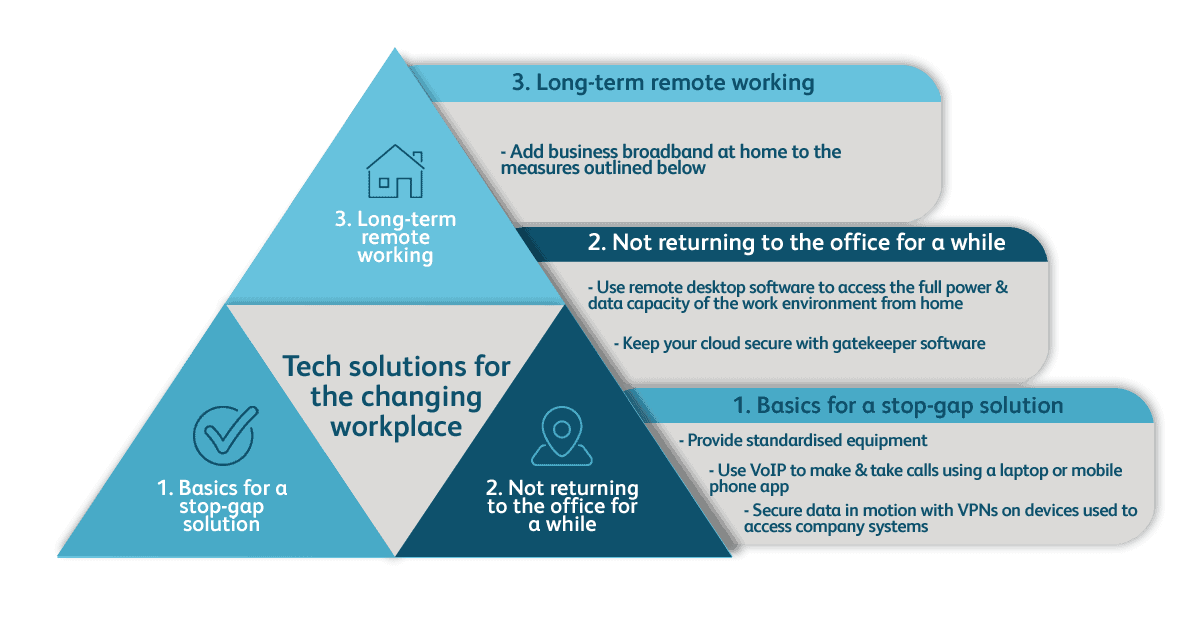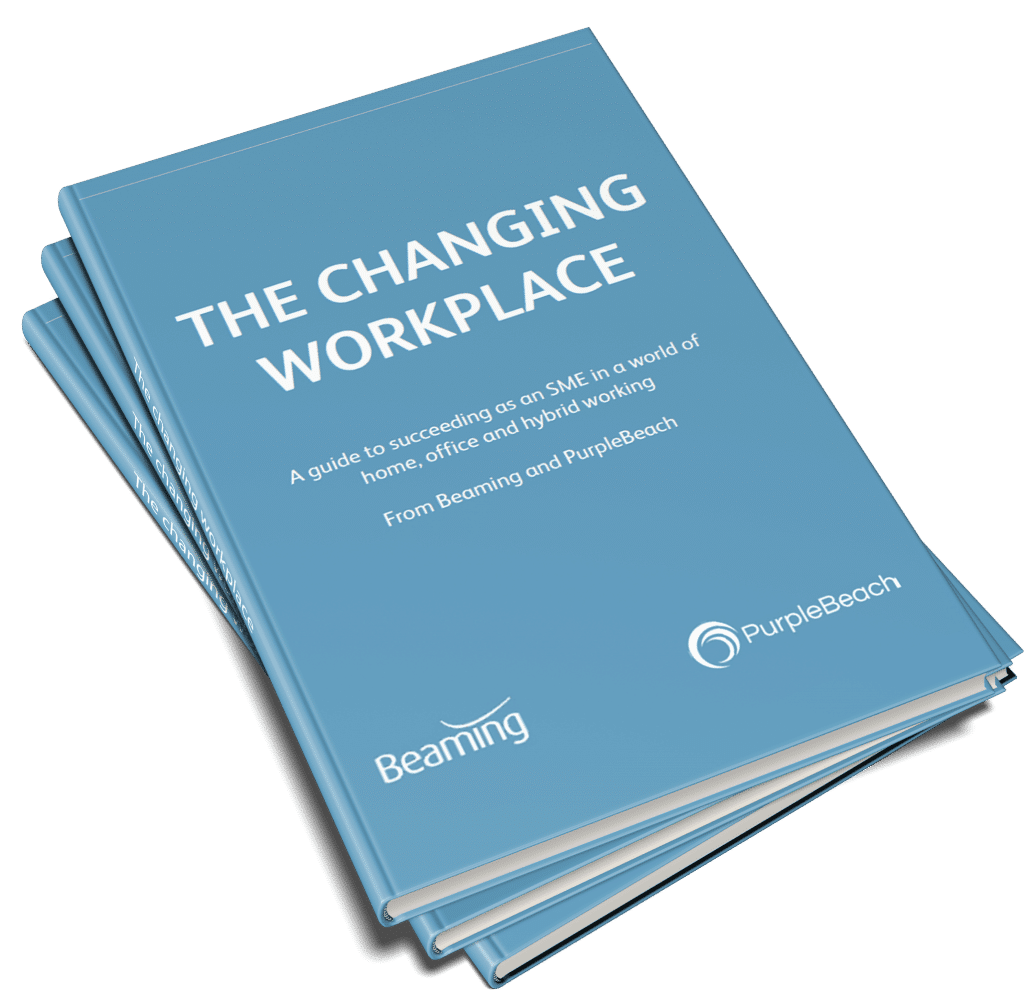Hybrid working: Getting the technical side right
The coronavirus pandemic is one of the biggest surprises to the UK economy we’ve encountered in decades.
Beaming’s annual survey of business leaders, undertaken in January, found that half (46%) of businesses would encounter operational delays should members of staff be unable to operate from their original business premises.
Just 22% of small and 28% of medium-sized businesses said they could access mission-critical systems from other locations immediately. Most of the rest had to put in place solutions that would enable business to continue in just a matter of days.
It is now time to take stock of those decisions, and ensure that the technology in place is resilient, secure and fit for the future.
There are three levels of connectivity organisations should think about. Each may suit a particular firm, from those looking at remote working long-term, to those needing a more simple stopgap.

Level 1: The basics, for everyone needing a stopgap solution
Standardise your equipment.
With such a sudden lockdown many employees didn’t have the equipment they needed to work from home effectively. Employers need to ensure that their people have everything required to work comfortably from home, from keyboards, headsets and laptops, to a desk and chair. Laptops for those working at home or adopting a hybrid approach will need remote connection to key workplace systems – ranging from email at the simplest end to highly complex programmes and networks at the other. This is a job for IT specialists – in-house or bought in.
Use VoIP to ensure privacy and professionalism.
Any business usually communicating via landlines should look to VoIP (Voice over Internet Protocol) telephony, which enables employees to make and take calls via their laptops or an app on their mobile phones. Rather than requiring employees to share their personal telephone numbers, VoIP allows organisations and their employees to be contactable via their usual business numbers and routed around the organisation in a professional manner. It allows customers to get the same professional experience whether an employee is working at home or in the office, making it very suitable for hybrid working.
Secure data in motion with VPNs.
All devices used by employees to access company systems or data should be equipped with VPN (Virtual Private Network) software which encrypts internet traffic and makes the flow of data more secure. It’s also important that your company uses a VPN for the office too. That way your data is secure, wherever employees are working.
Level 2: More security and speed, for those not returning to the office in the near future
Remote desktops.
Remote-desktop software allows your people to take control of their office computer remotely. It will let them access the full processing power and data capacity of their work environment from home, while company data stays safely in the office. There are clear speed and security benefits. It also allows those adopting a hybrid approach to work with a minimum of friction in the office-to-home transition.
Keep your cloud secure.
Cloud computing will give your employees access to the software, and services they need over the web, but it requires security. A cloud access security broker, or ‘gatekeeper’ software, which sits between a business and its cloud provider, ensures network traffic complies with its security policies. This lets businesses enforce different kinds of access control, such as encryption and two-factor authentication. A secure cloud solution makes remote and hybrid options simpler and more secure.
Level 3: Business-grade security and reliability at home, for long-term remote working
Business broadband to separate work from home.
All home workers need sufficient bandwidth to do their jobs remotely and securely. Many will be battling for control of broadband with spouses, housemates or family members. They will also be increasing the risk of a cyber-security breach by accessing business systems and data using home broadband. Firms committed to remote working for the long-term should consider providing dedicated business broadband services to employees at home. This ensures a robust and reliable connection that can be kept up-to-date and secure by your IT team.
Guide to the Changing Workplace
In this free guide for business managers, remote working experts and leaders of some of the UK’s best places to work give advice covering:
- How have the best workplaces adapted to home, remote and hybrid working?
- What should business leaders do to support employees through uncertainty?
- How can businesses bounce back better?
- What technology should we use to boost homeworking productivity?
